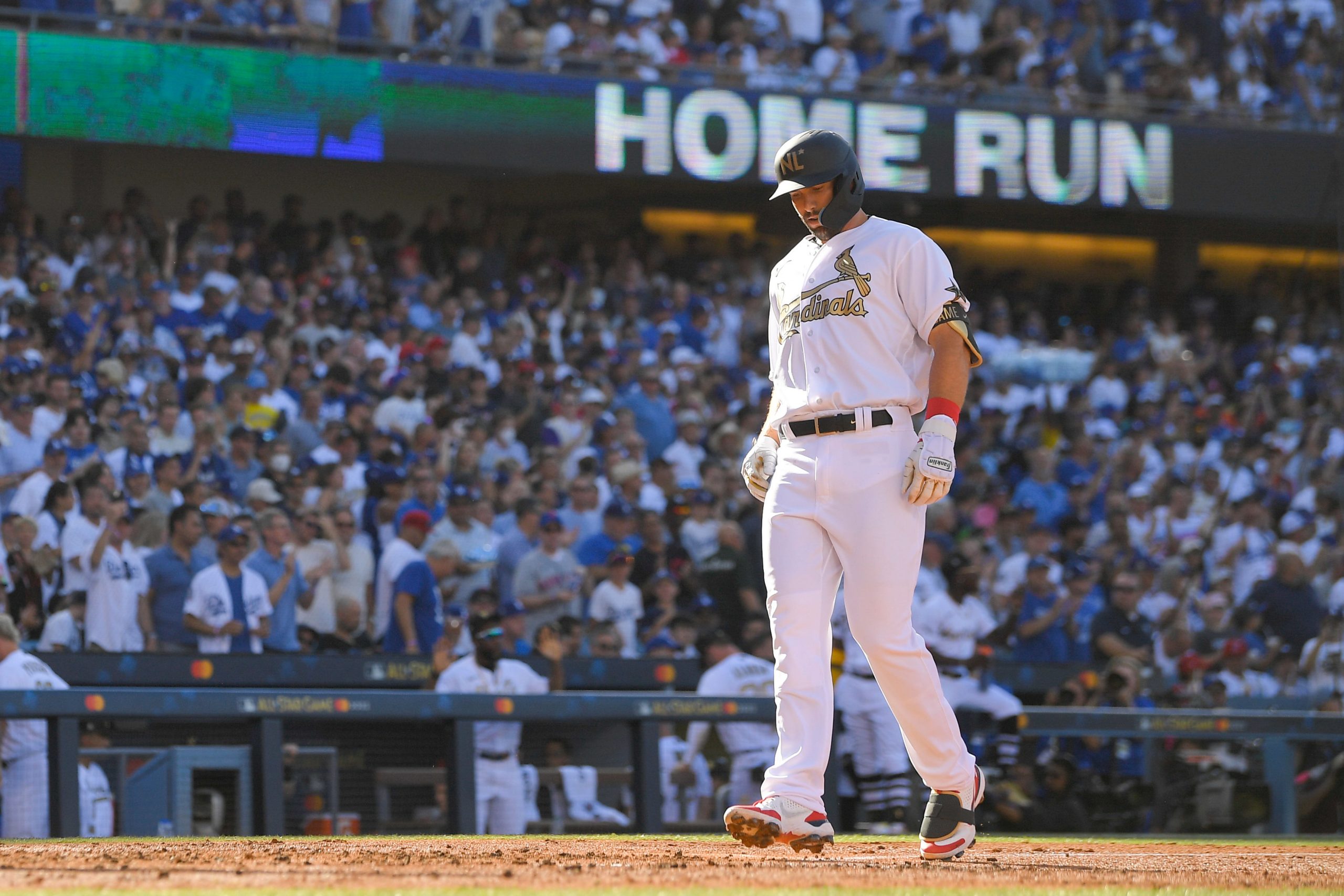The All-Star Game showcased what baseball has become — home runs, strikeouts and offense-killing shifts.
The National League didn’t have a hit between the first and eighth innings of Tuesday night’s 3-2 loss, its ninth in a row.
Four of the five runs scored on long balls. There were 22 strikeouts, including the final three batters on 10 pitches by the American League‘s Emmanuel Clase in a game that lasted 3 hours, 11 minutes despite just 13 hits, five walks, two hit batters and one runner reaching on a error.
Also Read: Anthony Rendon’s season ends in latest blow to Los Angeles Angels
Juan Soto, Kyle Schwarber and Jake Cronenworth all hit groundouts that might have been hits before the rise of computer programs that tell teams to place three and sometimes four players on the same side of second base.
The batter’s eye in center field offered a vivid display of what has overtaken baseball — an array of high-speed cameras and radar equipment that track every ball’s spin, every player’s sprint and stumble.
The NL did all its scoring during Shane McClanahan’s first 13 pitches of the first inning, getting Ronald Acuña Jr’s leadoff double, Mookie Betts’ RBI single and Paul Goldschmidt’s homer.
AL offense was even more condensed. Giancarlo Stanton hit a two-run homer in the fourth off Tony Gonsolin, and Byron Buxton went deep four pitches later.
Not a surprise in a season that has been the big league batting average dip to .242, its lowest since 1967.
Also Read: If All-Star Game decided by HR derby, final score stays same
Baseball’s competition committee is considering changes for next season that some purists consider revolutionary and some conclude necessary. A pitch clock is almost certain after testing throughout the minors this year.
Shift limits also have been proposed: Double-A and Class A teams were required this year to have four players on the infield, including two on each side of second base. The Florida State League adds an additional restriction starting July 22, drawing chalk lines in a pie shape from second base to the outfield grass, prohibiting infielders from the marked area pre-pitch.







